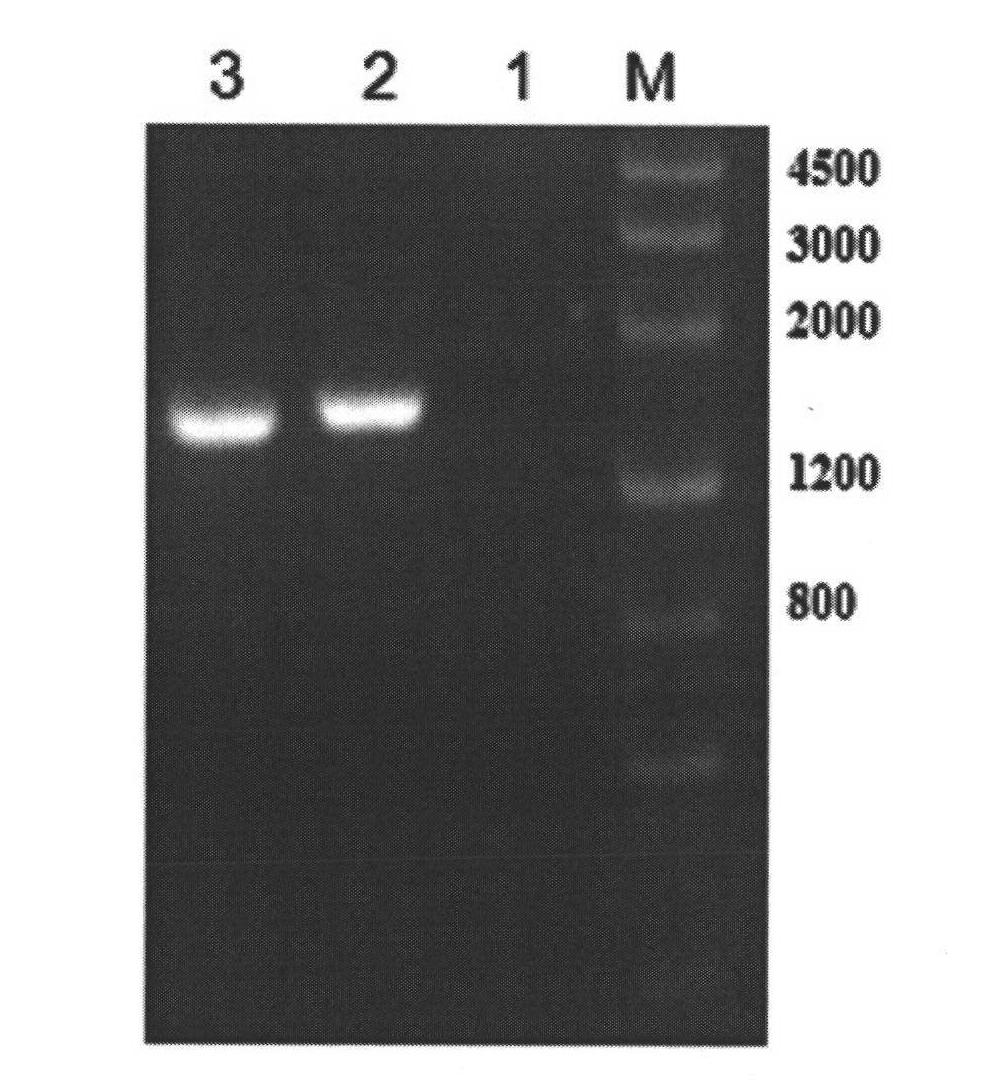Cholesterol oxidase gene, engineering bacterium and application thereof
A technology of cholesterol oxidase and genetic engineering strains, applied in the direction of genetic engineering, oxidoreductase, application, etc., can solve the problems of low utilization rate of degraded sterols, low yield, low substrate conversion rate, etc., to improve production efficiency and product quality Quality, improved utilization, environmental friendliness
- Summary
- Abstract
- Description
- Claims
- Application Information
AI Technical Summary
Problems solved by technology
Method used
Image
Examples
Embodiment 1
[0036] Example 1 , Mycobacterium NwIB-00 cholesterol oxidase gene acquisition, molecular identification and construction of Escherichia coli for heterologous expression
[0037] This example only takes the PCR method as an example. By analyzing the whole genome information of mycobacterium NwIB-01, the complete cholesterol oxidase gene is obtained, and PCR amplification primers are designed to clone cholesterol oxidase from mycobacterium NwIB-00. The DNA sequence of cho-1 (as shown in SEQ ID NO: 1, the corresponding amino acid sequence is shown in SEQ ID NO: 2) and the DNA sequence of cho-2 (as shown in SEQ ID NO: 3, the corresponding amino acid sequence As shown in SEQ ID NO: 4), the specific process is as follows:
[0038] 1.1. Acquisition of full-length cholesterol oxidase gene
[0039] It is currently known that the enzymes involved in cholesterol metabolism in NwIB-00 are: 3-sterone-Δ1-dehydrogenase gene (KSDD) and 3-sterone-9α-hydroxylase gene (KSH), through the softw...
Embodiment 2
[0057] Example 2 , Construction of cho-2 and cho-1 deletion genetically engineered strains in mycobacterium NwIB-00
[0058] This example takes the knockout of cho-2 as an example to illustrate the main technical means and methods of homologous recombination double crossover knockout commonly used in mycobacteria, and the knockout of cho-1 is completed by this method.
[0059] The cho-2 knockout plasmid in mycobacterium NwIB-00 was constructed, and the plasmid was electrotransformed into mycobacteria competent cells. Kanapenicillin and hygromycin B were used for preliminary screening of recombinants, and then rescreening was carried out on sucrose plates to obtain gene knockout recombinant NwIB-00.CHO2-405, and the above recombinants were verified by PCR method. The gene deletion double exchange operation can refer to the prior art (gene replacement using preserved DNA Bhavna G. Gordhan and Tanya Parish).
[0060] The specific steps for implementation are as follows:
[00...
Embodiment 3
[0072] Example 3 , Mycobacterium NwIB-00 and NwIB-01 transformation of steroidal compounds and result analysis method
[0073] Use 1%-10% surfactant, polymer or organic solvent (such as Tween80, ethanol, silicone oil, soybean oil, etc.) to aid the dissolution of the steroidal compound. Two-stage or three-stage cultivation is adopted, and the final transformation medium is inoculated with 1% to 20% of seeds, and the steroid compound can be added at any time. The conditions for steroid conversion are: culture temperature 25-37°C, high dissolved oxygen value, pH controllable between 5.0-8.0, and the end time of the conversion reaction can be determined by thin-layer chromatography (TLC) or gas chromatography (GC) analysis and conversion results. After the reaction, the steroidal conversion product can be extracted three times with the same volume of organic solvents such as ethyl acetate and chloroform, and the reaction liquids are combined and dried in vacuum for further anal...
PUM
 Login to View More
Login to View More Abstract
Description
Claims
Application Information
 Login to View More
Login to View More - R&D
- Intellectual Property
- Life Sciences
- Materials
- Tech Scout
- Unparalleled Data Quality
- Higher Quality Content
- 60% Fewer Hallucinations
Browse by: Latest US Patents, China's latest patents, Technical Efficacy Thesaurus, Application Domain, Technology Topic, Popular Technical Reports.
© 2025 PatSnap. All rights reserved.Legal|Privacy policy|Modern Slavery Act Transparency Statement|Sitemap|About US| Contact US: help@patsnap.com



